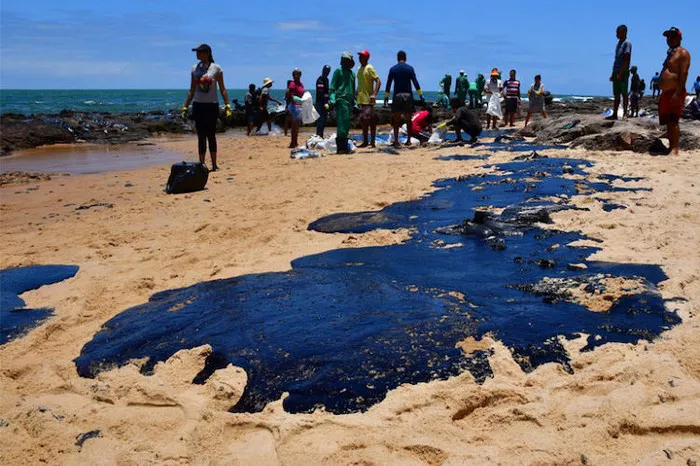Heavy crude oil is a type of crude oil that is dense and viscous, making it more challenging to extract and refine compared to lighter crude oils. Despite these challenges, heavy crude oil is an important resource due to its vast reserves and potential for energy production. This article explores the world’s largest deposit of heavy crude oil, its location, and its implications for the global energy market.
Introduction to Heavy Crude Oil
Heavy crude oil differs from conventional crude oil in its physical properties. It has a high density and viscosity, which makes it thicker and more difficult to pump from the ground. This type of oil often contains more sulfur and heavy metals, which complicates its refining process.
Characteristics of Heavy Crude Oil
High Viscosity: Heavy crude oil is thick and sticky, requiring additional processing to make it flow.
High Density: It is denser than lighter crude oils, which affects its extraction and transportation.
Higher Sulfur Content: Heavy crude typically contains higher levels of sulfur, making it more challenging to refine.
The Largest Deposit of Heavy Crude Oil
The world’s largest deposit of heavy crude oil is located in the Orinoco Oil Belt in Venezuela. This region is renowned for its vast reserves of heavy and extra-heavy crude oil.
Location and Size
The Orinoco Oil Belt is situated in the southeastern part of Venezuela, extending across several states, including Anzoátegui, Monagas, and Guárico. It covers an area of approximately 55,000 square kilometers and is believed to hold some of the largest reserves of heavy crude oil in the world.
Reserve Estimates
Estimates suggest that the Orinoco Oil Belt contains around 1.2 trillion barrels of heavy crude oil, making it the largest deposit globally. This figure represents a significant portion of the world’s known heavy crude oil reserves.
Extraction and Production
Extracting heavy crude oil presents unique challenges compared to lighter crudes. Due to its viscosity and density, special techniques and technologies are required to make the oil flow.
Technologies Used
Thermal Recovery: Methods such as steam-assisted gravity drainage (SAGD) and cyclic steam stimulation (CSS) are used to reduce the oil’s viscosity and facilitate extraction.
Chemical Injection: Injecting chemicals like solvents or surfactants can help lower the viscosity of heavy crude oil.
Upgrading: Heavy crude oil often needs to be upgraded or converted into lighter products before it can be refined efficiently.
Environmental and Economic Considerations
Extracting and processing heavy crude oil can have significant environmental impacts. The extraction process often requires substantial water and energy, and the refining process can produce higher levels of pollutants. However, the economic benefits of accessing such vast reserves can be substantial, providing a significant source of revenue and energy security for the producing country.
See Also: Gasoline Production: How Much from a Barrel of Oil?
Implications for the Global Energy Market
The discovery and exploitation of large deposits of heavy crude oil, such as those in the Orinoco Oil Belt, have several implications for the global energy market.
Impact on Oil Prices
The presence of large heavy crude reserves can influence global oil prices. If these reserves are developed and brought to market, they could impact the supply of oil and potentially affect prices. However, the high cost and complexity of extraction and refining can also influence the economic viability of these projects.
Energy Security
Countries with large heavy crude deposits, such as Venezuela, may experience increased energy security due to their vast resources. This can lead to greater leverage in international energy markets and provide a stable supply of oil for domestic and global consumption.
Investment Opportunities
The development of heavy crude oil deposits presents investment opportunities for oil companies and investors. Technologies and infrastructure required for extraction and refining represent significant areas for investment and technological innovation.
Challenges and Future Outlook
While the Orinoco Oil Belt represents a major source of heavy crude oil, there are several challenges associated with its development and utilization.
Technological Challenges
The extraction and processing of heavy crude oil require advanced technologies and substantial investment. Continued research and development are necessary to improve the efficiency and environmental impact of these processes.
Economic Viability
The high cost of extracting and refining heavy crude oil can impact its economic viability. Fluctuations in oil prices and changes in production costs can affect the profitability of heavy crude oil projects.
Environmental Concerns
The environmental impact of heavy crude oil extraction and processing remains a significant concern. Efforts to minimize environmental damage and improve sustainability are critical for the long-term development of these resources.
Conclusion
The Orinoco Oil Belt in Venezuela holds the world’s largest deposit of heavy crude oil, with estimated reserves of around 1.2 trillion barrels. This vast resource has significant implications for the global energy market, including its impact on oil prices, energy security, and investment opportunities.
Despite its potential, the development of heavy crude oil deposits presents challenges related to technology, economic viability, and environmental concerns. As the global energy landscape continues to evolve, the management and development of heavy crude oil resources will play a crucial role in shaping the future of energy production and consumption.
[inline_related_posts title=”You Might Be Interested In” title_align=”left” style=”list” number=”3″ align=”none” ids=”3769,3764,3684″ by=”categories” orderby=”rand” order=”DESC” hide_thumb=”no” thumb_right=”no” views=”no” date=”yes” grid_columns=”2″ post_type=”” tax=””]


































